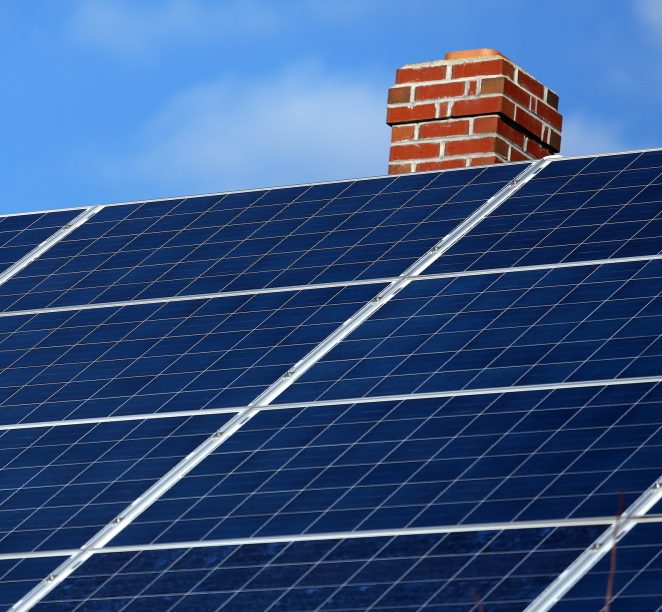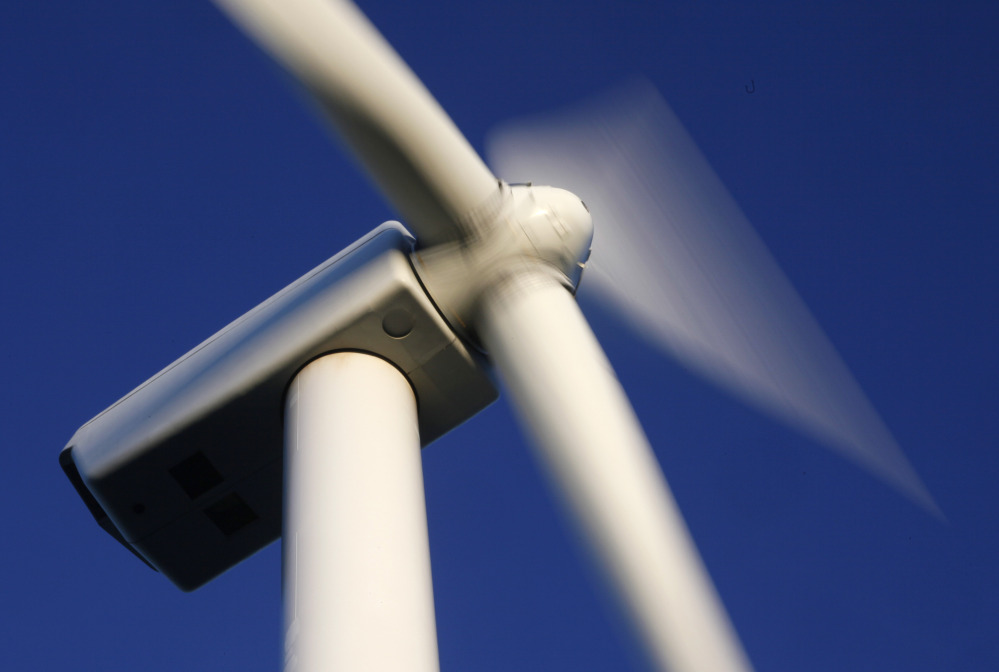President-elect Donald Trump will have the power to cast aside some of the Obama administration’s energy policies and objectives, but he will not be able to stop the market forces pushing the country toward cleaner and more sustainable energy.
That was the consensus Thursday among a panel of national energy policy experts at an industry-sponsored conference in Portland. The E2Tech Expo brought together leaders from Maine’s energy industry, policymakers, advocacy groups and academics at the University of Southern Maine.
Energy has been a contentious subject in Maine, where clean-energy proponents have locked horns with the administration of Gov. Paul LePage and business groups over the best way to lower costs and meet the state’s energy needs.
The panelists agreed that Trump could repeal President Obama’s executive orders related to energy, and that pending Obama administration objectives such as stricter federal limits on greenhouse gas emissions are effectively dead.
But the “New World Energy Order of Trump” won’t have as drastic an impact on industry and the environment as the incoming president’s critics may believe, said panelist Darrell Henry, partner at Gavel Resources, a bipartisan government relations consulting firm based in Washington, D.C.
“For those concerned, don’t panic,” Henry said. “For those excited, don’t get too euphoric.”
That’s because the energy industry is already on an irreversible course toward cleaner, more renewable sources of power, the panelists said. Every year, a higher percentage of the nation’s power comes from carbon-free, renewable sources. In Maine, two-thirds of the state’s net electricity generation in 2015 came from renewable energy resources, with 30 percent from hydroelectricity, 26 percent from biomass (mainly wood products, which are not carbon-free) and 10 percent from wind, according to the U.S. Energy Information Administration.
It’s what consumers want, and the cost of renewables has been falling sharply, the panelists said. Those realities won’t change under the Trump administration.
GOVERNOR ‘SUPPORTS ALL ENERGY FORMS’
“Yes, we’re going to see changes, but progress moves forward,” said panelist Nathan Smith, vice president of the Cadmus Group, a technical and strategic consulting firm based in Waltham, Massachusetts.
In Maine, there are several clean-energy projects in the works, including proposals to build solar arrays at the Sanford airport, in the Loring Commerce Centre business park in Limestone and on a capped landfill in South Portland; the proposed King Pine and Number Nine wind farms in northern Maine; and the University of Maine’s Aqua Ventus project to develop offshore wind power.
LePage often has said he favors expanding access to natural gas as a way to reduce energy costs, rather than subsidizing solar and wind projects. Last spring he vetoed an omnibus energy bill that would have extended incentives for some renewables.
“(The governor) supports all energy forms that help reduce the overall cost to consumers and business,” LePage spokeswoman Adrienne Bennett said in a written statement. “Bloated government subsidies place a burden on taxpayers, and these energy-subsidies takers have largely been wind and solar companies looking to make a buck. The governor also has maintained that when the technology advances (and the University of Maine is working on it) enabling wind and solar to become more competitive in the market, he will welcome it.”
The desire to reduce costs often drives the advance of clean-energy initiatives. Smith said savings alone are enough to ensure that some of those initiatives will persist. For example, efforts to reduce the carbon footprint of the federal government – America’s largest energy consumer – are expected to save taxpayers an estimated $18 billion over the coming decade, he said.
In the private sector, the panelists said they expect to see a dramatic increase in electric vehicles on the road in the coming years, a change that will largely be driven by market forces. Smith noted consumers’ excitement over electric car maker Tesla Motors, which is working on lower-priced models with greater energy efficiency.
“They’re buying Teslas because they’re cool, and they’re fun to drive, and you want one,” he said.
THE EXTENT OF PRESIDENTIAL POWERS
That is not to say President Trump won’t have a significant influence on U.S. energy policy and emissions, the panelists said. He will have the power to appoint conservatives to federal energy and environmental regulatory agencies, commissions and the U.S. Supreme Court. He will set the agenda for U.S. energy policy, which almost certainly will be based around economic growth and job creation, rather than renewable energy and pollution reduction.
Trump could pull out of the Paris Agreement with the United Nations Framework Convention on Climate Change. He could lobby Congress to repeal various U.S. Environmental Protection Agency regulations, or pass new laws creating incentives for carbon-intensive fuels such as coal in an effort to boost the economy and save or create jobs.
But Trump may find that it isn’t as easy to make those changes as he anticipated, even with a Republican Congress. Henry, the partner at Gavel Resources, noted that former President George W. Bush tried to repeal environmental regulations passed under the Clinton administration but was largely unsuccessful.
One major change that Trump could make to the energy industry is a renewed effort to build infrastructure such as oil and gas pipelines, the panelists said. Even the Keystone XL pipeline, rejected by the Obama administration, could be back in play.
But infrastructure expansion also will be subject to market forces, according to the panelists. For example, at current oil prices it’s unclear how much the industry would be willing to invest in such projects.
“Global issues will drive oil and gas investment,” Henry said, “but there will be no return to ‘Drill, baby, drill.'”
A MORE PROMINENT ROLE FOR STATES?
Other changes are happening behind the scenes in the energy industry that will further reduce carbon usage and emissions, said panelist David Meyer, a senior adviser at the U.S. Department of Energy.
New technologies and services at the distribution level are improving the efficiency of power grids, and the industry has broadly embraced cleaner, lower-carbon energy sources, Meyer said. In addition, new ways of thinking about power distribution are improving the balance among reliability, affordability, flexibility, resilience, security and environmental sustainability, he said.
“We are in the early stages of a massive transformation of the electricity sector itself,” Meyer said. That transformation can be justified entirely on the basis of cost savings and efficiency alone, he said.
“Electricity providers are energy-source agnostic,” said panelist Jason Smith, manager of environmental policy and external affairs at the Edison Electric Institute, an association that represents investor-owned U.S. electric companies.
They want to explore all possible energy sources and are the driving force behind the push into renewables, he said, noting that the industry is spending billions of dollars on energy-efficiency initiatives.
“A lot of these trends are driven by our customers asking for these distributed resources,” Jason Smith said.
Some of the country’s largest states already play a significant role in the creation of tougher carbon-emissions standards, the panelists said. Efforts in California, New York, Massachusetts and other states may take on a more prominent role if the Trump administration relaxes federal environmental standards as it has promised to do.
“These programs will likely revert to state-based programs again,” Henry said.
He noted that existing federal tax credits for wind and solar energy production do not expire until 2022, so those projects will continue to benefit from government incentives in the near future. Beyond that, their future is “questionable,” he said.
Copy the Story Link
Send questions/comments to the editors.





Success. Please wait for the page to reload. If the page does not reload within 5 seconds, please refresh the page.
Enter your email and password to access comments.
Hi, to comment on stories you must . This profile is in addition to your subscription and website login.
Already have a commenting profile? .
Invalid username/password.
Please check your email to confirm and complete your registration.
Only subscribers are eligible to post comments. Please subscribe or login first for digital access. Here’s why.
Use the form below to reset your password. When you've submitted your account email, we will send an email with a reset code.